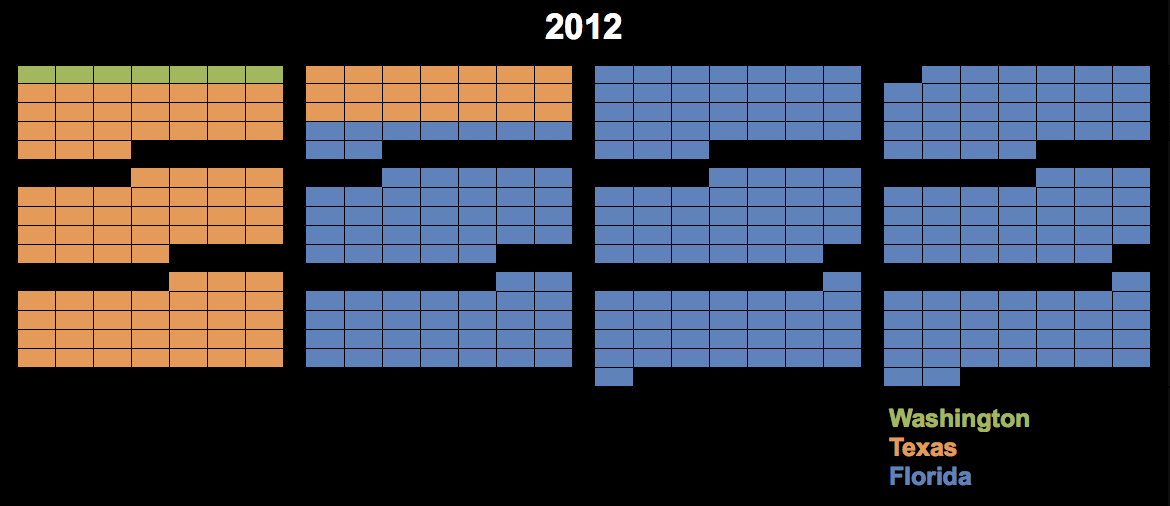I’ve developed an amateur interest in finance, motivated partly by curiosity and partly by survival instinct (401k’s don’t manage themselves!). It’s been a humbling journey, the more I learn the smaller my circle of confidence becomes.
The output of this effort is an approach to personal finance that is simple and boring. I’ll do my best to capture it here.
First step is to establish a foundation by setting goals, thinking about edge and managing emotions.
Establish Goals
Goals drives everything else. My personal goal is different from a venture capitalist who’s different from a mutual fund manager. “Generating returns in excess of a benchmark” might be critical for them but it’s irrelevant to me and might actually incentivize harmful behavior. I have a single LP to please – me.
A goal must have two components – objective and timeframe. “I want to retire with $x saved, in 35 years.” Are you saving for an emergency fund this year, a down payment in ~5 years, tuition in ~20, retirement in ~35, etc. Each has different time horizons, risk tolerances and liquidity needs.
Identify Edge (or lack thereof)
The market is zero sum; it’s mathematically impossible for everyone to beat the market. You need an edge to outperform.
Identifying your edge (or lack thereof) requires intellectual honesty. I’ll go first:
- Information edge – no, I’m a retail investor.
- Technology edge – no, I’ve coded a few tools but they are toys compared to the professionals.
- Speed edge – not even close.
- Research edge – no, night and weekends.
Intellectually honest answer – I have no edge. Competing head to head with firms who systematically develop edge is fraught with peril.
Manage Emotions
Humans are not evolutionarily adapted to the task of investing. Our survival instincts drive terrible financial decisions. This needs to be managed carefully. A good place to start is Munger’s Psychology of Human Misjudgment.
Process
With a firm foundation – goals, edge and emotion considered – you can begin the process.
Construct Portfolios Around Goals
Construct independent portfolios that align to each goal. Risk adjust each portfolio based on withdrawal horizon. Short horizons mean low risk and low returns – emergency funds, upcoming down payments, etc. Long horizons, like retirement, allow for higher risk and higher returns. It’s essential to get this match correct.
Diversify
I don’t have the time or expertise to analyze individual securities. This is further complicated by a lack of edge. While a hyper focused, Berkshire style, allocation of “good” stocks will certainly beat the market long term, that strategy isn’t available to me. And that’s ok.
If I can’t beat the market, but earning mere market returns enable my financial goals, then the optimal strategy is to match the market.
I define “the market” as something close to the Global Market Portfolio. Exact construction is up for debate but it’s important to draw the distinction between this approach and “just track the S&P 500”.
This approach is “index” investing not “passive” investing. There is nothing passive here. It makes active decisions about portfolio construction (Global market vs S&P), fund selection, tax management, etc. Taking a large position in Vanguard S&P 500 (VOO) and calling it a “passive” investment is dangerous. This is an active bet on domestic, large cap companies.
Keep it Cheap
Taxes and fees hurt performance. Buy cheap index ETF’s to minimize fees and hold as long as possible to avoid taxes. Mix in some tax loss harvesting and utilize tax advantaged accounts wherever possible. Keep it cheap and pay lowest tax possible. Nothing novel here.
Conclusion
This is my process today – simple and boring. Will it beat the market? No. Will it underperform the market? No. Managed carefully will it provide the growth needed to accomplish my financial goals? Probably yes.



